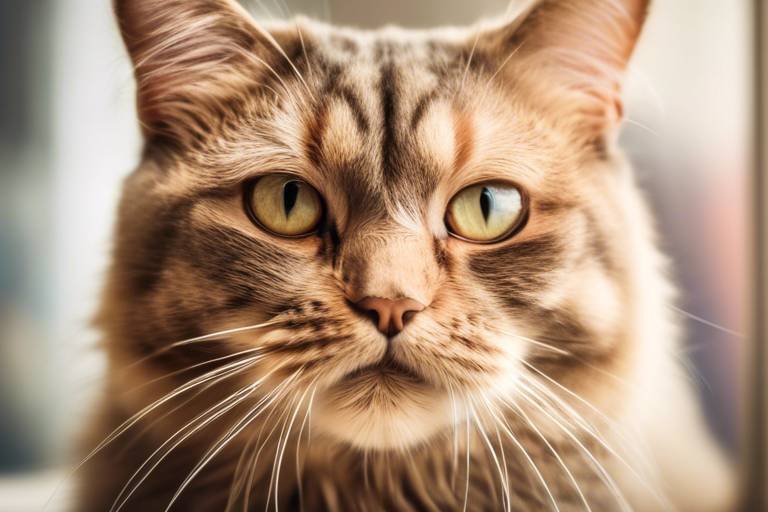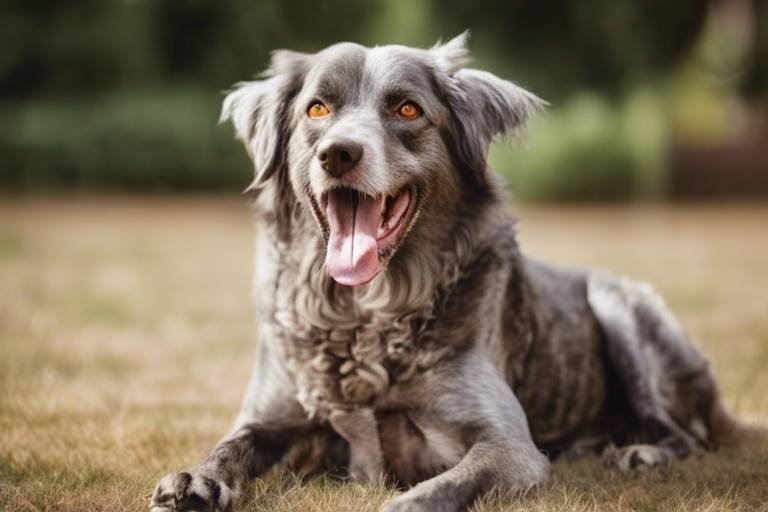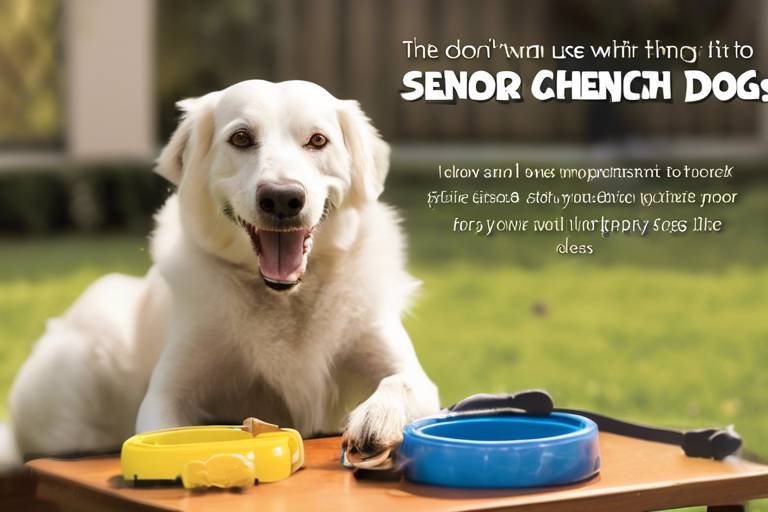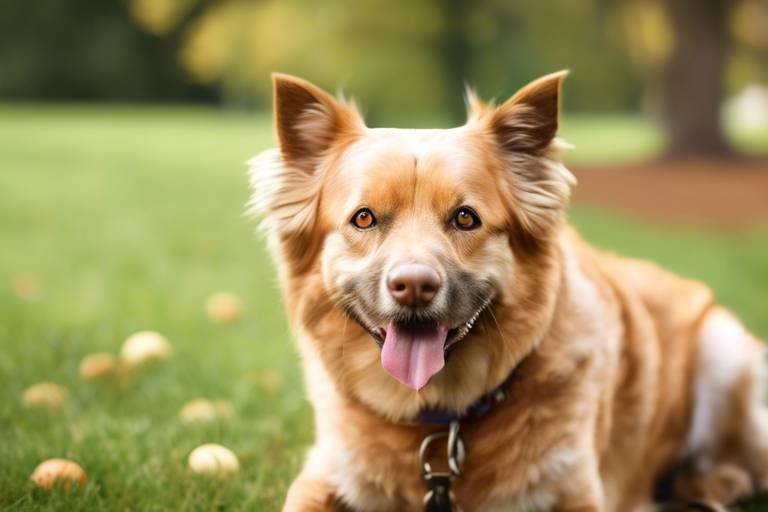The Role of Spaying/Neutering in Senior Pet Care
As our beloved pets age, their health and well-being become paramount considerations for pet owners. One of the most impactful decisions you can make for your senior pet is whether to spay or neuter them. You might wonder, "Isn't this something I should have done when they were younger?" While it’s true that spaying and neutering are often associated with younger pets, these procedures can play a crucial role in enhancing the quality of life for older animals as well. In this article, we’ll explore the myriad benefits of spaying and neutering, particularly for senior pets, and why it's never too late to consider these options.
When we talk about spaying and neutering, we're referring to surgical procedures designed to prevent reproduction. Spaying is the process of removing the ovaries and usually the uterus in female pets, while neutering involves the removal of the testicles in male pets. Understanding these procedures is essential for pet owners, especially those with senior pets, as they can significantly influence health, behavior, and overall quality of life.
For senior pets, spaying and neutering can provide a wealth of health benefits that are particularly important as they age. These procedures can significantly reduce the risk of certain cancers and infections, which are more prevalent in older animals. Imagine having the power to reduce the likelihood of your furry friend suffering from serious health issues simply by making a proactive choice! Let’s dive deeper into the specific health advantages that spaying and neutering offer to our aging companions.
Spaying and neutering are not just about preventing litters; they also play a vital role in the health and behavior of pets, especially as they transition into their senior years. Many pet owners may not realize that these procedures can lead to significant changes in their pets’ lives. So, what exactly are the implications of these surgeries for older pets? Let’s break it down.
As pets grow older, they become more susceptible to various health issues. Spaying and neutering can help mitigate some of these risks. For instance, spaying female pets before their first heat cycle can dramatically lower the risk of mammary tumors, a common concern in older females. Similarly, neutering male pets effectively eliminates the risk of testicular cancer, which can be a significant health threat as they age.
One of the primary health benefits of spaying and neutering is the reduction of cancer risks in senior pets. By preventing reproductive cancers, these procedures contribute to a longer, healthier life. For instance, spaying female pets before their first heat significantly lowers the risk of mammary tumors. This timing is crucial, as it can lead to optimal health outcomes. In contrast, neutering male pets eliminates the risk of testicular cancer, ensuring that they can enjoy their golden years without the shadow of this disease hanging over them.
Research shows that spaying female pets before their first heat cycle can lower the risk of developing mammary tumors by up to 90%. This staggering statistic highlights the importance of timing in spaying. If you have a senior female pet who has not been spayed, it’s worth discussing with your veterinarian whether this procedure could be beneficial, even at an older age.
For male pets, neutering not only eliminates the risk of testicular cancer but also contributes to overall health and longevity. Neutered males are often less prone to certain aggressive behaviors and can live happier, healthier lives. Imagine your senior dog being more relaxed and less territorial—what a relief for both of you!
Spaying and neutering can lead to positive behavioral changes in senior pets. After the procedure, many pets exhibit reduced aggression, less marking behavior, and improved overall demeanor. It’s like turning down the volume on a radio that’s been blaring too loudly! You might find that your once feisty feline or rambunctious pup becomes more mellow and easier to manage, creating a more harmonious home environment.
When considering spaying or neutering senior pets, several factors must be taken into account. Age, health status, and the timing of the procedures are all critical aspects to discuss with your veterinarian. It's essential to assess the overall health of your pet before proceeding with surgery, as older animals may have underlying health conditions that need to be addressed.
Before proceeding with spaying or neutering, it’s crucial to assess the overall health of senior pets. Veterinarians typically perform a thorough health evaluation, including blood tests and physical examinations, to identify any potential risks associated with the surgery. This assessment ensures that your pet is a good candidate for the procedure and can help mitigate any complications.
The timing of spaying or neutering in senior pets can significantly impact recovery and health outcomes. If your pet has never been spayed or neutered, discussing the best time for these procedures with your veterinarian is essential. They can provide guidance on when to consider these surgeries for older animals, taking into account their unique health needs and circumstances.
- Is it safe to spay/neuter a senior pet? Yes, many senior pets can safely undergo these procedures, but a thorough health assessment is crucial.
- What are the benefits of spaying/neutering older pets? Benefits include reduced cancer risks, improved behavior, and overall enhanced quality of life.
- How will my pet's behavior change after surgery? Many pets become less aggressive and more relaxed after being spayed or neutered.
- What should I expect during recovery? Recovery times can vary, but most pets will need a quiet space and some monitoring post-surgery.

Understanding Spaying and Neutering
Spaying and neutering are more than just medical procedures; they are pivotal decisions that can significantly influence the health and happiness of your beloved furry companions. Spaying refers to the surgical removal of a female pet's reproductive organs, while neutering is the equivalent procedure for male pets, involving the removal of the testicles. These procedures are designed to prevent unwanted litters and have numerous benefits that extend beyond mere population control. Understanding these procedures is essential for pet owners to make informed decisions about their senior pets' health and well-being.
One of the most common misconceptions is that spaying and neutering are only necessary for young pets. In reality, these procedures can be just as beneficial for senior pets. When we talk about senior pets, we generally refer to those who are around 7 years old or older. At this stage in their lives, pets may face unique health challenges, and spaying or neutering can help mitigate some of these risks. For instance, hormonal fluctuations can lead to various health issues, and by spaying or neutering, pet owners can help stabilize their pets' hormonal levels, promoting better overall health.
It's also essential to consider the emotional and behavioral aspects of spaying and neutering. Many pet owners have noticed that their pets become calmer and more manageable after these procedures. This change can be particularly beneficial for senior pets who may have developed certain behavioral issues over the years. For instance, spaying females can reduce heat-related behaviors, while neutering males can decrease aggression and territorial marking. In a way, it's like giving your pet a fresh start, allowing them to enjoy their golden years without the stress of hormonal influences.
However, before making the decision to spay or neuter your senior pet, it's vital to consult with a veterinarian who understands the specific needs of older animals. The vet will assess your pet's overall health, discuss the potential risks and benefits, and help you determine the best course of action. In some cases, there may be health concerns that could complicate the procedures, so a thorough examination is crucial.
In summary, understanding spaying and neutering is key to making informed decisions about your senior pet's health. These procedures can offer significant health benefits, improve behavior, and enhance the quality of life for your furry friend. Always consult with your veterinarian to ensure that you are making the best choice for your pet's unique situation.

Health Benefits for Senior Pets
The decision to spay or neuter your senior pet is not just about preventing unwanted litters; it carries profound health benefits that can significantly enhance their quality of life. As pets age, their bodies undergo various changes, and spaying or neutering can play a crucial role in mitigating some of the health risks they face. For instance, certain cancers and infections become more prevalent in older animals, and these surgical procedures can help reduce those risks substantially.
One of the most compelling reasons to consider spaying or neutering your senior pet is the reduction of cancer risks. Research shows that spaying female pets before their first heat can dramatically decrease the likelihood of developing mammary tumors, which are more common as they age. This is particularly important because mammary tumors can be quite aggressive and often lead to serious health complications. In fact, studies indicate that spaying can reduce the risk of mammary tumors by up to 90% when performed early enough.
On the other hand, neutering male pets eliminates the risk of testicular cancer entirely. This is a significant health advantage, especially for senior male pets who may be more susceptible to this type of cancer as they age. Not only does neutering prevent testicular cancer, but it also reduces the risk of prostate problems, which can affect older male pets and lead to discomfort and other health issues.
In addition to cancer prevention, spaying and neutering can help older pets avoid certain infections. For instance, spayed females are less likely to develop pyometra, a serious uterine infection that can be life-threatening if not treated promptly. This condition is more common in unspayed females as they age, making spaying a proactive measure for their long-term health.
Furthermore, the benefits go beyond just physical health. Spaying and neutering can also lead to positive behavioral changes in senior pets. For example, neutering male pets often reduces aggressive behaviors and territorial marking, which can be a source of stress for both the pet and the owner. Similarly, spaying females can help alleviate mood swings associated with their heat cycles, leading to a more stable and pleasant temperament.
Ultimately, spaying and neutering can contribute to a longer, healthier life for your senior pet. While the thought of surgery can be daunting, the long-term benefits are well worth it. As a responsible pet owner, it’s essential to weigh these advantages against any potential risks and discuss them with your veterinarian to make an informed decision that suits your pet’s specific needs.
| Health Benefit | Details |
|---|---|
| Reduction in Cancer Risks | Spaying reduces the risk of mammary tumors; neutering eliminates testicular cancer. |
| Prevention of Infections | Spayed females are less likely to develop pyometra. |
| Behavioral Improvements | Reduces aggression and marking behaviors in males; stabilizes mood in females. |
Reducing Cancer Risks
When it comes to the health of our beloved senior pets, one of the most compelling reasons to consider spaying or neutering is the significant reduction in cancer risks. As pets age, their bodies become more susceptible to various health issues, including cancers that can drastically affect their quality of life. By opting for these surgical procedures, pet owners can take proactive steps to safeguard their furry companions from the devastating effects of reproductive cancers.
For female pets, spaying is particularly crucial. Studies have shown that spaying a female dog or cat before her first heat cycle can reduce the risk of developing mammary tumors by as much as 90%. This statistic is not just a number; it reflects the real difference that timely intervention can make. Imagine being able to prevent a potentially life-threatening condition simply by scheduling a surgery at the right time! The timing is essential because once a female pet experiences her first heat, the risk of mammary tumors increases significantly.
On the other hand, neutering male pets offers its own set of health benefits. One of the most notable advantages is the elimination of the risk of testicular cancer. This type of cancer is not only painful but can also be fatal if left untreated. By neutering, pet owners can ensure that their male companions are not only healthier but also more comfortable in their golden years. It's like giving them a shield against a potential threat that could arise as they age.
To further illustrate the impact of spaying and neutering on cancer risk, consider the following table:
| Procedure | Cancer Type | Risk Reduction |
|---|---|---|
| Spaying | Mammary Tumors | Up to 90% if done before first heat |
| Neutering | Testicular Cancer | Eliminated |
In addition to these specific cancers, spaying and neutering can also help reduce the incidence of other health issues related to the reproductive system, such as uterine infections in females. These infections can be especially severe in older pets, leading to complications that may require extensive treatment. By making the decision to spay or neuter, pet owners are not just investing in their pet's immediate health but are also paving the way for a longer, healthier life.
Ultimately, the choice to spay or neuter your senior pet is not just about preventing unwanted litters; it’s a crucial step in ensuring that they live a longer, healthier life free from the shadow of certain cancers. So, if you’re contemplating this decision, think about the long-term benefits and the peace of mind that comes with knowing you’re doing everything possible to protect your furry family member.
Spaying and Mammary Tumors
When it comes to the health of female pets, spaying plays a crucial role, particularly in the prevention of mammary tumors. These tumors are not just a concern for younger dogs; they can also affect senior pets, making the timing of spaying all the more important. Research has shown that spaying a female dog before her first heat cycle can significantly reduce her risk of developing mammary tumors later in life. In fact, the statistics are quite striking: spaying before the first heat can lower the risk by up to 99%! This is a compelling reason for pet owners to consider early spaying as a proactive health measure.
But what happens if the spaying is done after the first heat? While it still offers some protection, the risk of mammary tumors increases with each heat cycle. It's essential to understand that these tumors can be malignant, leading to serious health issues and potentially impacting the quality of life for senior pets. Therefore, spaying not only prevents unwanted litters but also serves as a safeguard against severe health complications down the road.
Veterinarians often recommend spaying as part of a comprehensive health care plan for female pets. In addition to reducing the risk of mammary tumors, spaying can help eliminate the risk of pyometra, a life-threatening infection of the uterus that is more common in older, unspayed females. The benefits of spaying extend beyond just reproductive health; they contribute to the overall well-being and longevity of your beloved pet.
It's important to discuss with your veterinarian the best timing for spaying, especially if your pet is already a senior. Factors such as her current health status and any existing medical conditions will influence the decision. Regular veterinary check-ups can help assess these factors and determine the most appropriate course of action. Remember, the earlier you spay, the better the chances of keeping those mammary tumors at bay!
- What age is best to spay my female pet? The ideal age is before her first heat cycle, typically around six months old.
- Are there risks associated with spaying older pets? While there are some risks, a thorough health assessment by a veterinarian can mitigate many of these concerns.
- Can spaying affect my pet's behavior? Yes, spaying can lead to a reduction in aggressive behaviors and marking territory.
- Is spaying necessary for my pet's health? Absolutely! It significantly lowers the risk of certain cancers and infections.
Neutering and Testicular Cancer
Neutering male pets is more than just a means to control the pet population; it plays a vital role in enhancing their overall health and longevity. One of the most significant benefits of neutering is the elimination of the risk of testicular cancer. This type of cancer is particularly common in unaltered male dogs and can lead to severe health complications if left untreated. By neutering your male pet, you are not only preventing a potential cancer diagnosis but also promoting a healthier lifestyle.
Testicular cancer can be quite insidious, often developing without any noticeable symptoms until it reaches an advanced stage. This is where the importance of neutering comes into play. When a male pet is neutered, the testicles are removed, and with them, the possibility of developing testicular cancer is effectively eradicated. This proactive approach to your pet's health can save you from the emotional and financial strain of dealing with cancer treatments later on.
Moreover, neutering can have a positive impact on your pet's behavior. Male pets that are not neutered often exhibit behaviors driven by their hormones, such as aggression and territorial marking. By neutering, you can help reduce these behaviors, creating a more harmonious environment at home. It's like turning down the volume on a loud radio; the atmosphere becomes more pleasant for both you and your furry friend.
To further illustrate the benefits of neutering in relation to testicular cancer, consider the following table:
| Aspect | Neutered Male Pets | Unaltered Male Pets |
|---|---|---|
| Risk of Testicular Cancer | 0% | High |
| Behavioral Issues | Reduced Aggression, Less Marking | Increased Aggression, Marking Behavior |
| Overall Health | Improved | Variable |
As you can see, neutering not only eliminates the risk of testicular cancer but also contributes to better behavior and overall health. It's a win-win situation for both pets and their owners. So, if you have a male pet and are considering neutering, know that you are taking a significant step toward ensuring a healthier and happier life for your furry companion.
- What age is best to neuter my pet? Generally, it's recommended to neuter pets between six months and one year of age, but older pets can still benefit from the procedure.
- Will neutering change my pet's personality? Neutering may reduce aggressive behaviors but typically does not change a pet's fundamental personality.
- Are there any risks associated with neutering? As with any surgery, there are risks, but they are minimal and often outweighed by the health benefits.
Behavioral Changes Post-Procedure
Spaying and neutering are not just about preventing unwanted litters; they can also lead to significant behavioral changes in senior pets. Imagine your once feisty feline or rambunctious pup becoming a little more relaxed and easier to manage. This transformation is often a welcome change for many pet owners who may have struggled with certain behaviors prior to the procedure. One of the most noticeable changes is a reduction in aggression. Pets that undergo these surgeries tend to exhibit less dominant behavior, which can create a more harmonious household, especially if there are multiple pets living together.
Another common behavioral shift is the decrease in marking behavior. Male dogs, in particular, are notorious for marking their territory. After neutering, many of these dogs will stop this habit, leading to fewer accidents in the house and less stress for their owners. The same goes for female pets, who may engage in less territorial behavior after being spayed. This can make living with them a lot more pleasant, as you won't have to worry about constant marking or aggressive interactions with other pets.
It's also worth noting that spaying and neutering can help reduce anxiety-related behaviors. Pets can become anxious due to hormonal fluctuations, and by eliminating these hormones, you might find your furry friend to be calmer and more at ease. For instance, if your dog used to bark excessively or pace around the house, you might notice a decline in these behaviors post-surgery. In essence, the procedure can help your pet find a sense of stability and peace.
However, it’s important to remember that while many pets will experience positive changes, not every pet will react the same way. Some may still exhibit certain behaviors, and it’s crucial to approach these situations with patience and understanding. Training and socialization can still play a significant role in shaping your pet's behavior, even after spaying or neutering. So, if you notice lingering issues, consider consulting with a professional trainer or behaviorist to address them effectively.
In summary, the behavioral changes that occur post-spaying or neutering can greatly enhance the quality of life for both pets and their owners. By reducing aggression, marking behavior, and anxiety, these procedures contribute to a more balanced and enjoyable home environment. If you’re considering spaying or neutering your senior pet, rest assured that the potential benefits extend beyond just health; they can also lead to a happier, more well-adjusted companion.
- Will my pet's personality change after spaying/neutering? While some behavioral changes may occur, most pets retain their unique personalities. The goal is to reduce unwanted behaviors.
- Is it safe to spay/neuter a senior pet? Yes, but it’s essential to consult with your veterinarian to assess your pet’s health before proceeding.
- How long does it take for behavioral changes to occur? Changes can often be seen within a few weeks post-surgery, but it may take longer for some pets.
- Are there any risks associated with spaying/neutering senior pets? As with any surgery, there are risks, but a thorough health evaluation can help mitigate these concerns.

Considerations for Older Pets
When it comes to spaying or neutering senior pets, the decision isn’t as straightforward as it might be for younger animals. There are several important factors to consider that can significantly impact the health and well-being of your furry friend. First and foremost, the age of your pet plays a crucial role. While younger pets typically recover quickly from these procedures, older pets may face different challenges. This doesn’t mean that spaying or neutering is off the table; it simply means that careful consideration is necessary.
Another critical aspect to assess is the health status of your senior pet. Older animals may have underlying health conditions that could complicate surgery. For instance, pets with heart issues or chronic illnesses may not be ideal candidates for anesthesia. Therefore, a thorough veterinary evaluation is essential. Your vet will likely run a series of tests to determine if your pet is healthy enough for the procedure. This might include blood work, X-rays, or even a physical examination to assess their overall condition.
Timing is also a significant consideration. If your pet is already experiencing health issues, the timing of the procedure can greatly influence recovery. For example, scheduling the surgery during a period when your pet is feeling particularly well can lead to a smoother recovery process. It’s also vital to discuss with your veterinarian any potential risks associated with waiting too long to spay or neuter your pet. In some cases, delaying the procedure may increase the chances of certain health issues arising.
Additionally, it's worth noting that the benefits of spaying or neutering can vary based on the individual pet’s circumstances. While many senior pets can benefit from these procedures, there are instances where the risks may outweigh the advantages. For example, if a senior dog has a history of severe reactions to anesthesia or has been diagnosed with a progressive illness, the decision may lean towards avoiding surgery altogether.
Ultimately, the key to making an informed decision lies in open communication with your veterinarian. They can provide insights tailored to your pet’s unique situation, helping you weigh the pros and cons effectively. It’s crucial to remember that every pet is different, and what works for one may not be suitable for another.
- Is it safe to spay/neuter an older pet? Yes, but a thorough health assessment is essential to determine if the pet is a suitable candidate.
- What are the risks of spaying/neutering senior pets? Risks include complications from anesthesia and potential recovery challenges, depending on the pet's health.
- What should I do if my senior pet has health issues? Consult your veterinarian to discuss the best course of action, which may include alternative treatments.
- How can I prepare my senior pet for surgery? Follow your vet's pre-surgery instructions, including fasting and any necessary medications.
Assessing Health Risks
When it comes to spaying or neutering senior pets, the first step is to assess their overall health. This is crucial because older pets may have underlying health issues that could complicate surgery. A thorough health evaluation by a veterinarian is essential to identify any potential risks. During this assessment, the vet will typically perform a physical examination and may recommend blood tests to evaluate organ function, blood cell counts, and other vital parameters.
One of the key factors veterinarians consider is the pet's age. While spaying and neutering are generally safe procedures, older pets may have a higher risk of complications due to factors like reduced organ function or pre-existing conditions. For instance, a senior dog with heart disease or diabetes may require special considerations before undergoing surgery. The vet will discuss these risks with you, helping you make an informed decision.
Additionally, it's important to consider the pet's weight and overall physical condition. Overweight pets, for instance, may face greater surgical risks and longer recovery times. If your pet is overweight, your veterinarian might suggest a weight management plan before considering surgery.
Moreover, the timing of the procedure plays a significant role in the recovery process. For senior pets, the post-operative recovery period may be longer compared to younger animals, and they may require additional care and monitoring. This is where the veterinarian's expertise is invaluable. They can provide personalized recommendations based on the pet's health status, ensuring a smoother recovery.
In summary, assessing health risks before spaying or neutering a senior pet involves a comprehensive evaluation of their age, weight, and overall physical condition. Engaging in a detailed discussion with your veterinarian can help you navigate the complexities of these procedures and make the best choice for your beloved companion.
- Is it safe to spay/neuter my senior pet? Yes, but a thorough health assessment is essential to ensure safety.
- What are the risks associated with these procedures in older pets? Risks can include complications from anesthesia and longer recovery times.
- How can I prepare my senior pet for surgery? Follow your vet's advice on pre-surgery fasting and health management.
- What should I expect during recovery? Monitor your pet for any unusual behavior and follow post-operative care instructions.
Timing of the Procedures
When it comes to spaying or neutering senior pets, timing is everything. Just like a well-timed punchline can make a joke land perfectly, the right moment for these procedures can significantly influence your pet's recovery and overall health outcomes. But how do you know when that perfect moment is? Well, it largely depends on a few key factors, including your pet's age, health status, and any pre-existing conditions that may complicate the surgery.
Veterinarians often recommend assessing your pet's overall health through a thorough examination before deciding on the timing of the procedure. This includes blood tests, physical examinations, and possibly imaging studies to ensure that your furry friend is fit for surgery. If your senior pet has underlying health issues, such as heart disease or diabetes, your veterinarian may suggest waiting until those conditions are better managed. It's like preparing for a big game; you wouldn't want to step onto the field without ensuring that your team is in top shape!
Another important consideration is the age of your pet. While spaying and neutering are often performed on younger animals, senior pets can still benefit from these procedures. However, the risks associated with anesthesia and surgery may be higher in older pets. Generally, if your pet is over the age of seven, it's crucial to have an in-depth discussion with your veterinarian about the potential risks and benefits. They can help you weigh the pros and cons, allowing you to make an informed decision that prioritizes your pet's health and well-being.
Here’s a quick overview of timing considerations:
| Age Group | Consideration | Recommended Action |
|---|---|---|
| Under 7 years | Generally low risk | Proceed with spaying/neutering |
| 7-10 years | Moderate risk, health assessment needed | Consult veterinarian for tailored advice |
| Over 10 years | Higher risk, careful evaluation required | Consider alternatives or delay surgery |
In some cases, veterinarians may recommend waiting until your senior pet has reached a stable health condition before proceeding with the surgery. This is particularly true if your pet has recently undergone treatment for an illness or injury. Just like a good recipe, where the timing of adding ingredients can make or break the dish, the timing of spaying or neutering can significantly impact your pet's recovery and quality of life.
Ultimately, the decision about when to spay or neuter your senior pet should be made collaboratively with your veterinarian. They will take into account all the nuances of your pet's health and lifestyle, ensuring that you make the best choice for your beloved companion. Remember, this isn't just about preventing future litters; it's about giving your furry friend a healthier and happier life!
- Is it safe to spay/neuter an older pet? Yes, but it's essential to have a thorough health assessment first.
- What are the risks of delaying the procedure? Delaying can increase the risk of certain health issues, but it may be necessary based on your pet's health.
- How long does recovery take for senior pets? Recovery times can vary, but most pets will need a few days to a week to fully recuperate.
Frequently Asked Questions
- What is the difference between spaying and neutering?
Spaying is a surgical procedure for female pets that involves removing the ovaries and usually the uterus, while neutering is the equivalent procedure for male pets, which involves removing the testicles. Both procedures prevent reproduction and can contribute to the overall health of your pet.
- At what age should I consider spaying or neutering my senior pet?
While most pets are spayed or neutered at a younger age, senior pets can also benefit from these procedures. It's essential to consult with your veterinarian to assess your pet's health and determine the best timing for the surgery, as older pets may have different considerations compared to younger ones.
- What are the health benefits of spaying or neutering senior pets?
Spaying and neutering can significantly reduce the risk of certain cancers and infections in senior pets. For example, spaying female pets before their first heat greatly lowers the risk of mammary tumors, while neutering male pets eliminates the risk of testicular cancer, contributing to a longer, healthier life.
- Are there any risks associated with spaying or neutering older pets?
Yes, there are potential risks, especially if the pet has underlying health issues. It's crucial to have a thorough health assessment by a veterinarian before proceeding with the surgery. They will evaluate factors like age, weight, and existing health conditions to ensure your pet's safety during the procedure.
- How will spaying or neutering affect my senior pet's behavior?
Many pet owners notice positive behavioral changes after spaying or neutering. These procedures can help reduce aggression, marking behaviors, and other issues related to hormonal influences, making your senior pet more relaxed and easier to manage.
- What should I expect during the recovery process after the surgery?
Recovery times can vary, but most pets will need a few days to a week to heal. It's essential to follow your veterinarian's post-operative care instructions, which may include limiting activity, monitoring the surgical site, and ensuring your pet is comfortable and well-hydrated.
- Can spaying or neutering prolong my senior pet's life?
While spaying or neutering does not guarantee a longer life, it can significantly reduce the risk of certain diseases and health issues, which may contribute to a longer, healthier life for your senior pet. A proactive approach to their health care is always beneficial.



















